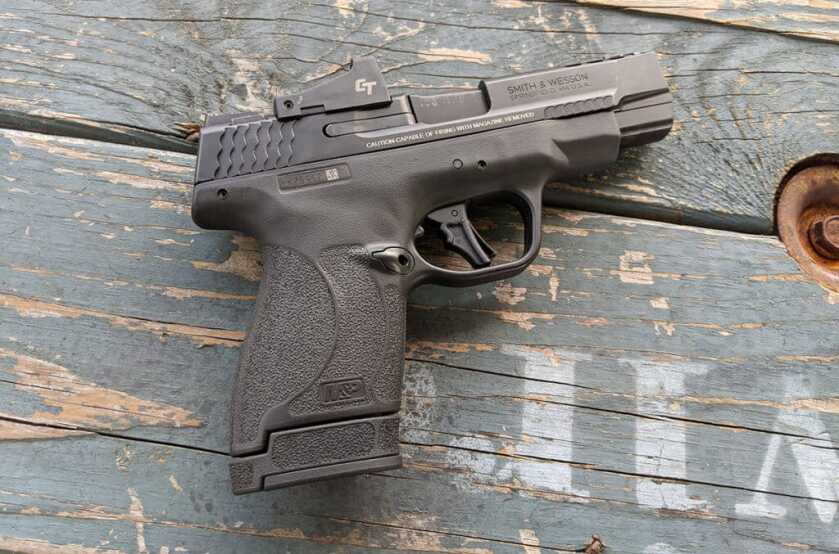
Smith & Wesson’s M&P Shield wasn’t the first handgun designed specifically for concealed carry, but it was close. Along with Springfield’s XD(S) and a few others, the Shield helped launch the concealed carry movement from a niche hobby into a mainstream phenomenon.
Smith & Wesson improved on the original design with the Shield 2.0, but the new Shield Plus is by far the biggest step forward.
Like the Sig Sauer P365, the Shield Plus features a hybrid single/double-stack magazine capable of holding 13+1 rounds. This adds five rounds to the original Shield’s carrying capacity without adding to the gun’s width.
I’m not the first gun writer to marvel at the black magic of the hybrid mag design, but that doesn’t make it any less incredible.
Every model of the Shield Plus comes with this additional mag capacity along with optional night sights and a thumb safety. The Performance Center model I tested for this review comes with a four-inch barrel, a Crimson Trace micro-optic, and a ported barrel and slide.
Is it concealed carry perfection? Maybe, maybe not. But it’s without question the culmination of the last 20+ years of development in the market, and you won’t be disappointed with the latest iteration of the now legendary Shield design.
Click here to see standard Shield Plus models.
Click here to see Performance Center Shield Plus models.
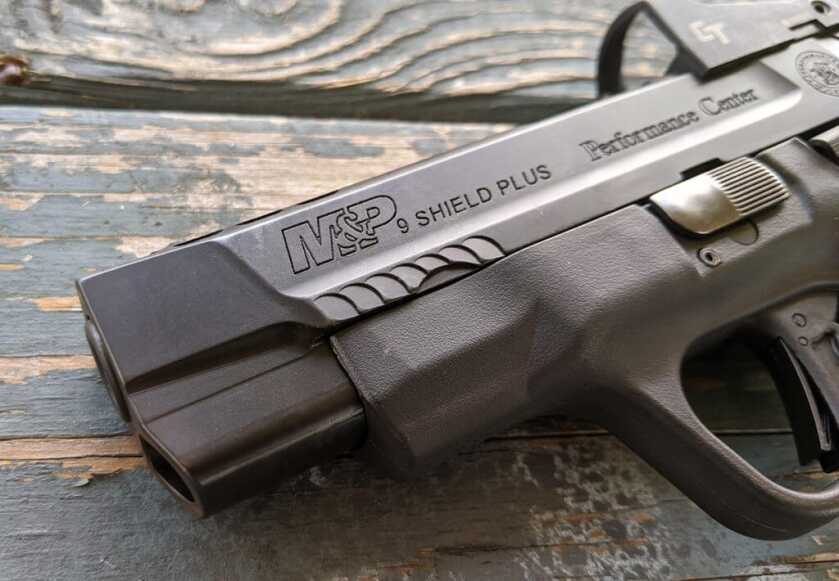
Specification of Performance Center M&P 9 SHIELD PLUS CRIMSON TRACE
- Caliber 9mm Luger
- Capacity 13+1
- Optics Yes
- Safety No Thumb Safety
- Length 7
- Front Sight Fiber Optic Green
- Rear Sight Fiber Optic Red
- Action Striker Fire
- Grip Polymer
- Barrel Material Stainless Steel with Armornite® Finish
- Slide Material Stainless Steel with Armornite® Finish
- Frame Material Polymer
- Slide Finish Matte Black
- Frame Finish Matte Black
- Barrel Length 4″ (10.2 cm)
- Weight 22.6 oz.
- MSRP $869 (Performance Center) $553 (Base Model)
High-Cap Micro Guns
The Sig Sauer P365 made a huge splash in 2018 because it was the first subcompact carry gun to offer more than an 8-round capacity. Since then, the Springfield Hellcat, the Ruger Max-9, and the Smith & Wesson Shield Plus have followed suit. In case you’re wondering, here’s how each handgun’s magazine stack stacks up against the others:
- Ruger Max-9: 12+1
- Springfield Hellcat: 13+1
- Sig Sauer P365X: 12+1
- Smith & Wesson Shield Plus: 13+1
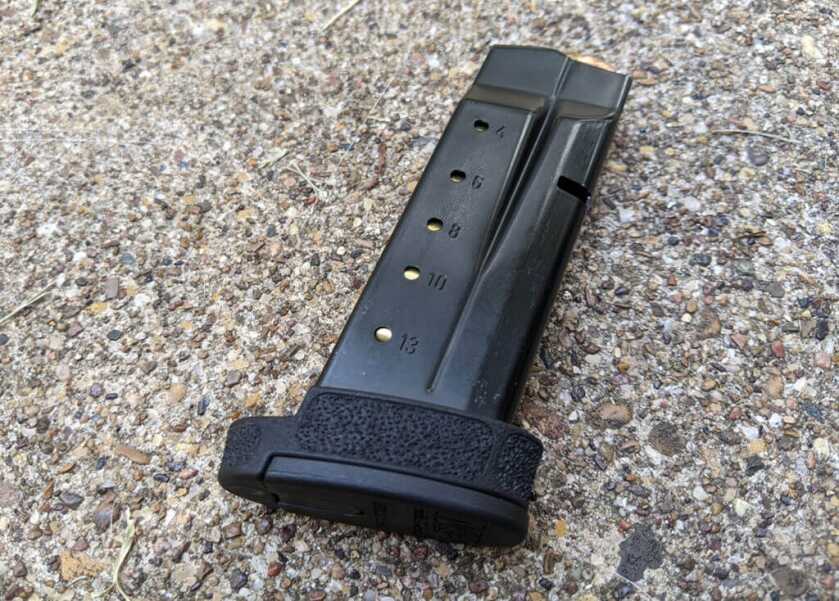
Best Upgrades
The Shield M2.0 rolled out with a few nice features, but it wasn’t enough to convince me to upgrade from the original Shield I still carry. The Shield Plus is different. The basic model isn’t much more expensive than my trusty carry gun, but it features several serious upgrades that have me thinking about making the switch.
First and most obviously, the Shield Plus holds five more rounds than the original, adding over 60% to the gun’s carrying capacity. Magazine capacity has always been the biggest knock on micro-carry guns. They’re lighter and more comfortable to conceal, but they’ve historically held far fewer rounds than a compact M&P, for example.
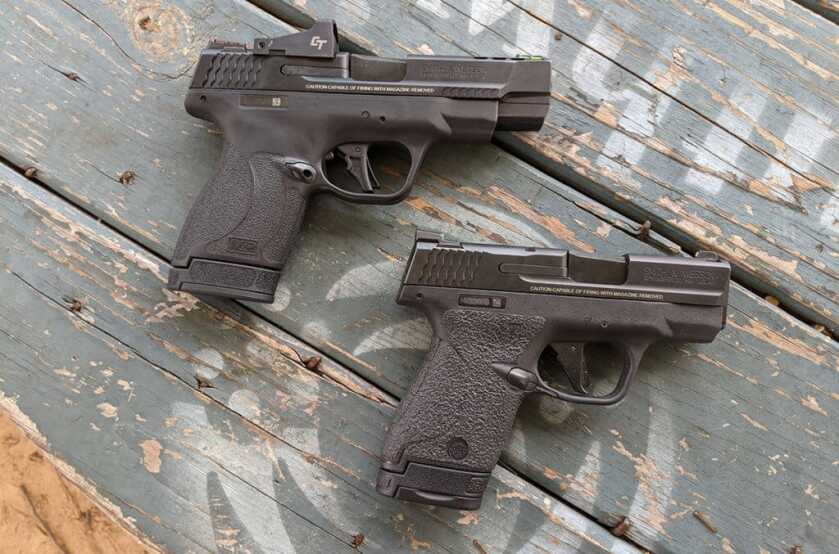
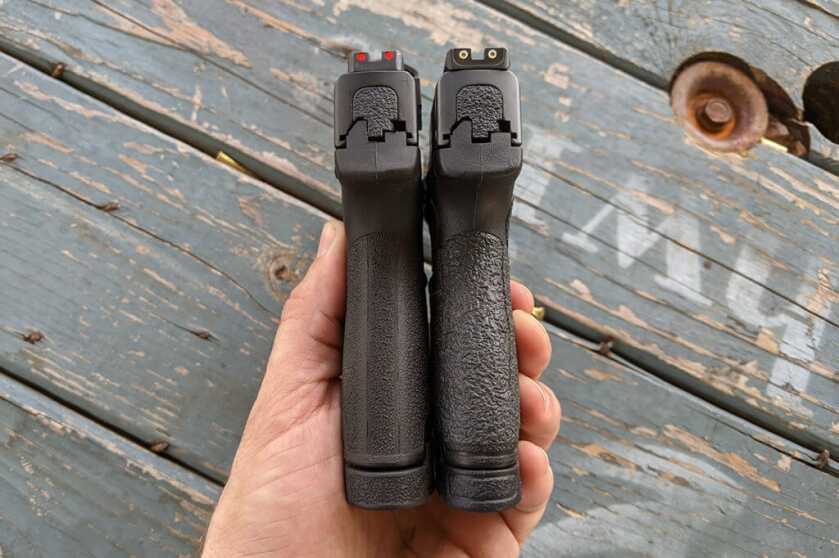

The new high-capacity micro guns have all but ended that criticism. Compact guns still hold one or two extra cartridges, but only full-sized handguns can significantly increase that capacity.
Whether five additional rounds will make much difference in a self-defense situation is the subject of another article. But as the old cowboy saying goes, it can’t hurt.
The trigger is the other serious improvement. On both the basic and Performance Center models, the Shield Plus is fitted with a flat-faced black polymer trigger with a metal safety fin. I can’t speak to the Shield M2.0 because I never owned one, but the original Shield came with a crummy, hinged trigger. I swapped mine out for an Apex flat-faced trigger as soon as I could, and I’m glad I did.
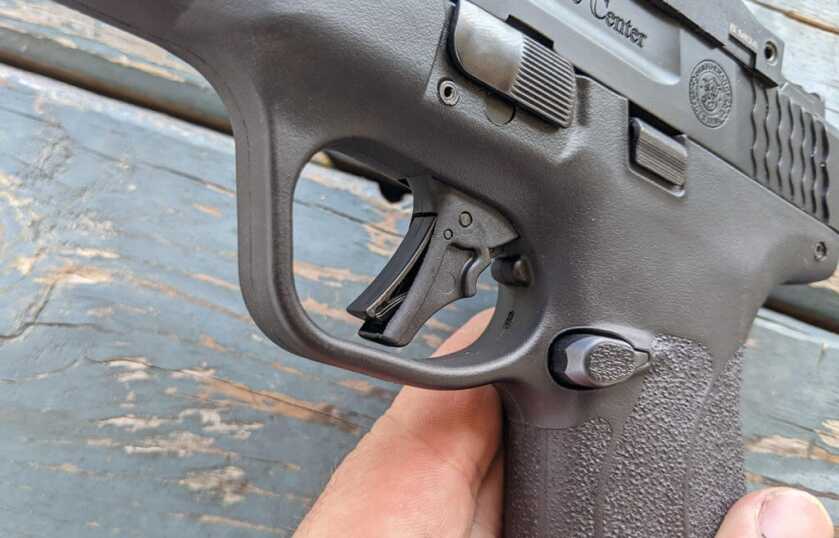
The trigger on the Shield Plus rivals the aftermarket Apex system. It features a crisp, consistent 5-pound break after 0.3 inches of take-up and an audible, tactile reset.
You might reasonably argue about the relative benefit of five extra rounds, but no one can argue that a nice trigger increases accuracy. Paired with a Crimson Trace optic, the trigger on the Shield Plus will help even the most inexperienced shooter put shots on target in short order.
Worst Upgrades
I’ll keep this short because the Shield Plus doesn’t have many weaknesses, but I think Smith & Wesson overdid it a bit on the grip texturing. I know folks criticized the original Shield for its slippery grip. I was one of them. I installed a set of Talon grips even before upgrading the trigger.
But the Shield Plus uses true skateboard tape. Especially rough grip texturing can be helpful if the gun or your hands are wet, but there’s a balance. Too little grip and the gun might slip; too much, and the texturing can be painful after a full day at the range.
Gloves can solve this problem, and hand rash is a non-factor in a self-defense situation. So, maybe it’s not a big deal. But I noticed the rough texturing, and it may rub a bit when it’s carried all day.
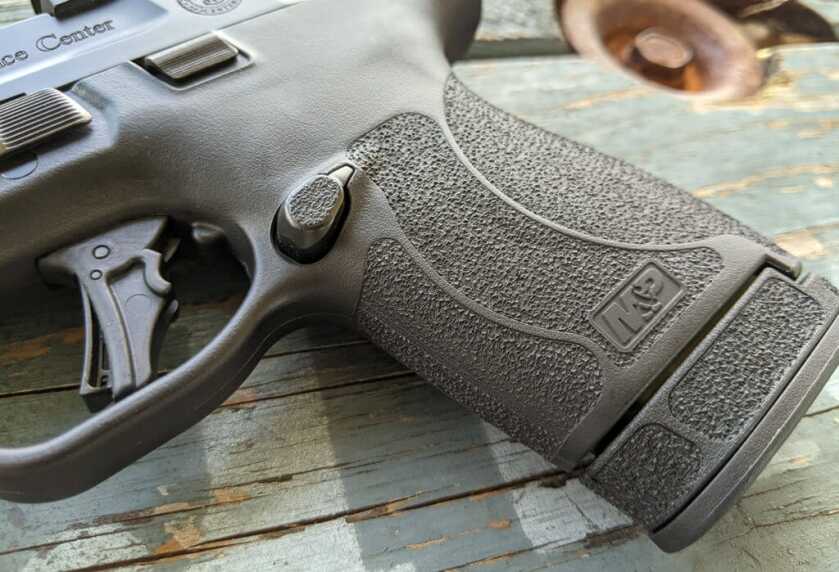
Another thing I wanted to mention: Smith & Wesson, if you’re reading this, can you please design a Shield with a light rail? I know, there are companies that make handgun lights specifically for the Shield. But they wouldn’t have to do that if Shields came with a standard Picatinny rail like nearly every other handgun.
At the Range
None of this is to say the Shield Plus is unpleasant to shoot. Quite the contrary.
The Shield’s ergonomics have always been great, and the Plus’s contours are identical. I had no trouble transitioning from the old school Shield to the newer model when I took it to the range last week. As you can see, the dimensions between the two firearms are identical. The Performance Center model I tested is fitted with a longer barrel, but the grip and rear portion of the handgun is the same.

The excellent trigger adds to the Shield Plus’s shootability. A crisp, consistent trigger allows a shooter to fire off rounds without disturbing the sights, and this trigger is no different. Hitting shots from 10-25 yards wasn’t difficult at all, especially with the Crimson Trace micro-optic.
Speaking of the optic, it’s great. The Crimson Trace 1500 features a 5 MOA red dot, a low-profile design, and an auto-on function that automatically powers on the dot and adjusts the brightness. Automatic brightness adjustment could be a problem in low-light conditions with a flashlight, but when I tested this scenario, I didn’t have any trouble seeing the dot.
The slide is milled specifically for the Crimson Trace optic, which means you won’t be able to fit it with your favorite micro-red dot without an aftermarket plate. The good news is that if you like the CT optic, you don’t have to deal with sketchy mounting systems. The optic screws right into the slide for a super-secure fit.
The optic also features a trough, which allows it to co-witness with the high-visibility fiber optics sights.
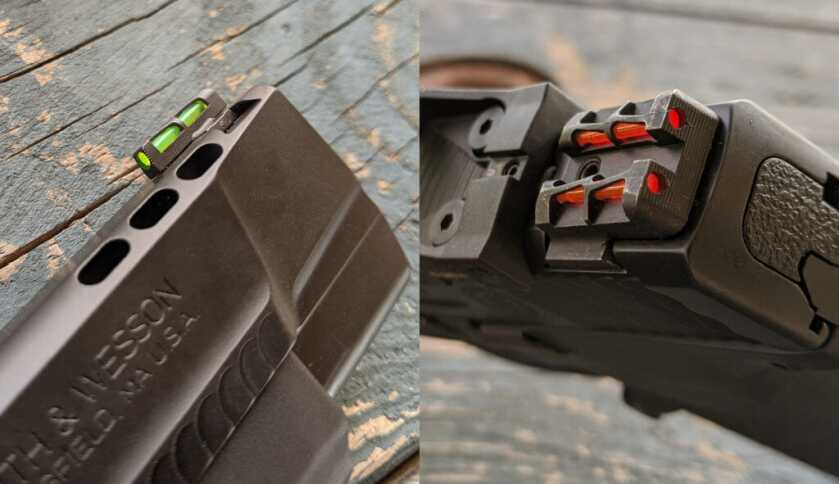

I’m sorry to say that none of these features are available on the standard Shield Plus models. Smith & Wesson does offer night sights with the basic models, but the optics-ready slide is only available on the Performance Center versions.
Back to the range.
If you haven’t yet taken the plunge and invested in a handgun optic, I’d encourage you to do so. The technology is now reliable enough that the U.S. military may soon be adopting it. I’m always amazed at how much better I shoot with a handgun optic. Finding the damn thing takes some getting used to, but once you overcome that hurdle, the visual feedback of the red dot helps you stay on target, transition between targets, and diagnose any flinching immediately.
I found the same to be true with the Shield Plus. The optic stayed securely mounted and allowed me to hit targets out of the box.
It also helps with pinpoint accuracy. I shot several different kinds of Hornady 9mm ammunition from a Ransom Multi Cal. Steady Rest, and I was pleased with the results.
At 10 yards, the Shield Plus posted consistent groups in the 0.65” range with both the Hornady American Gunner +P and Custom 124-grain loads.
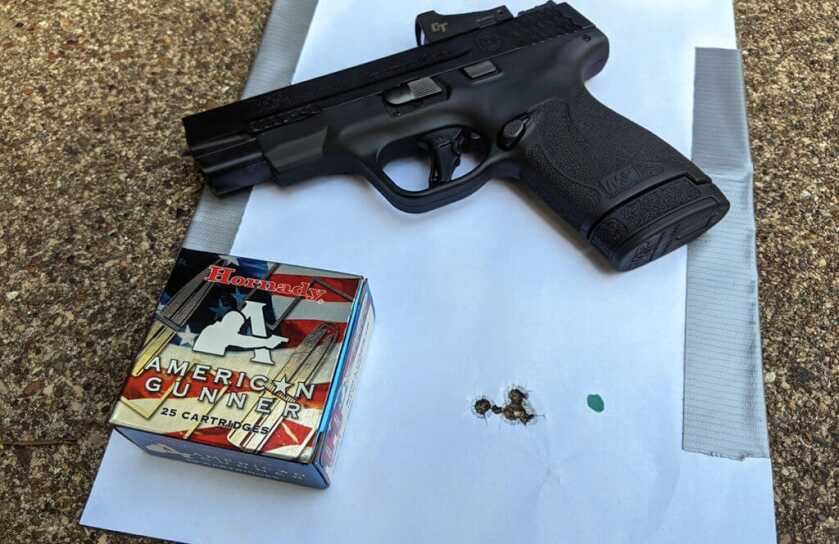
At 25 yards, the gun seemed to prefer the 124-grain American Gunner loads, posting a sub-2.5” and a sub-2” group. Group sizes expanded somewhat with the 115-grain and 147-grain pills, but it still threw up a 2.6” group with the 115-grain American Gunner rounds. For a concealed carry gun—heck, for most semi-auto handguns—this is great accuracy.
One last thing: the ported barrel and slide look cool, but I’m not convinced of their practical benefits. I get the concept. In theory, gasses escaping from the ports will reduce muzzle rise and allow for quicker follow-up shots. The Shield Plus is easy to shoot quickly, but I think that has more to do with the trigger and the aggressive grip texturing than anything else.
Ported barrels and slides also introduce the danger of injury when shooting from the hip. While not recommended for precision accuracy (contrary to old cowboy movies), shooting from retention is a valuable self-defense skill. With a ported barrel and slide, hot gasses pointed upward may injure the victim of an attack, which is exactly the opposite of what you’re going for in that scenario.

The good news is that Smith & Wesson offers the Performance Center Shield Plus with and without the ported barrel. I’d leave it off your order, and it’ll save you $30.
Last Shots
Concealed carry firearms have come a long way in the last 20 years. Virtually every major manufacturer offers a carry gun (even Kimber, for goodness sake), and concealed carry practitioners are spoiled for options.
I don’t think there’s a better option than the Shield Plus. It holds as many rounds as any other high-capacity micro gun, and it’s well-built, reliable, and accurate. I had zero malfunctions when I took it to the range, and I could hit whatever I was aiming at.
We’ll likely see greater improvements in the next few years. In this market, gun companies have to keep improving to avoid becoming obsolete. But right now, you can’t do any better than the Smith & Wesson Shield Plus.
Click HERE to see standard Shield Plus models.
Click HERE to see Performance Center Shield Plus models.
